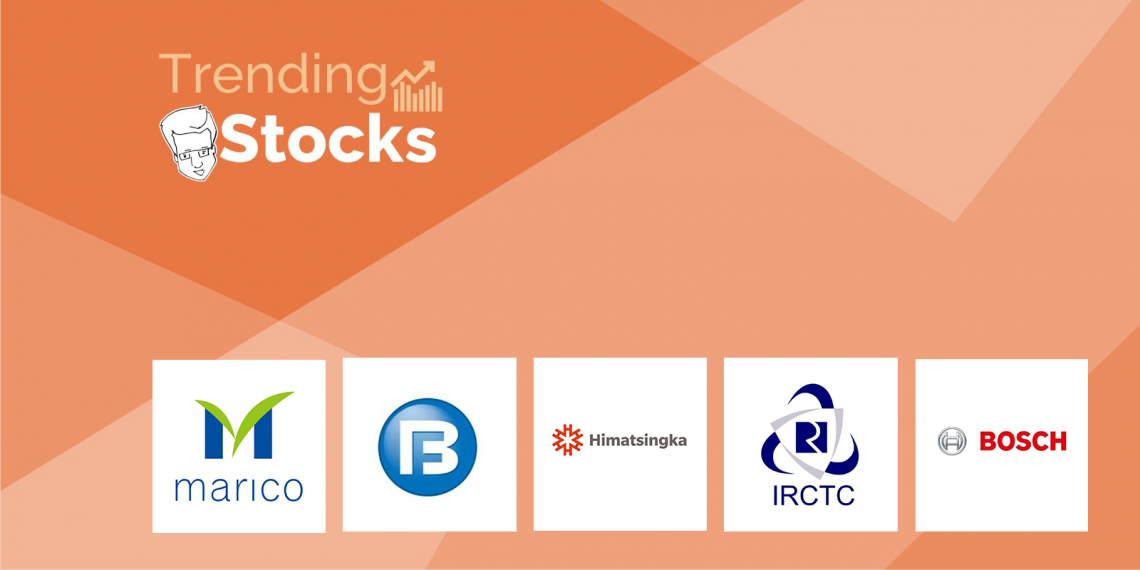Read about Marico, Himatsingka Seide & other stocks below:

The stock rallied after the company reported revenue growth in the low twenties and double-digit volume growth in the September 2021 quarter and as of today’s date, this is Marico share price
During the quarter, the sector saw improved demand trends as mobility levels increased COVID-19 infections were reduced and vaccination drives were accelerated. Marico reported in its July-September (Q2FY22) quarterly update that discretionary categories and out-of-home consumption had both increased noticeably.
Saffola’s growth was muted due to a high base and volatility in input prices, whereas Parachute and VAHO continued to grow rapidly. According to the company, the digital brand Foods grew strongly in line with the company’s target.
“The international business delivered double-digit constant currency growth, with positive trends observed in all markets except Vietnam.” “Vietnam, where a large portion of our portfolio is discretionary, was experiencing a severe Covid surge and stringent lockdown restrictions,” Marico explained.
Among key inputs, copra prices fell further, crude prices remained firm, and edible oil prices fluctuated at higher levels. Gross margin is expected to improve marginally from the previous quarter but will be under pressure year on year due to significantly higher input costs over the last year, according to the company.

The stock rallied on the expectation of strong demand. The company is a play on India’s textile export story, which is reviving after a period of dormancy. The revenues are expected to grow annually over the next two years due to strong demand improvement in key markets for soft home products, higher capacity utilization, and the company’s price-cost-growth strategy and the order books for the fiscal year 2021-22 (FY2022) are full,. Over the next two years, it is expected that the company will reduce debt and expand margins while generating free cash flows in the future.
While there are no price increases in Q1FY22, they will begin to appear in the July-September quarter (Q2FY22), and of today’s date this is Himatsingka share price
Himatsingka is a vertically integrated Indian textile company with a global presence that designs, develops, manufactures, and distributes a range of home textile products.

The stock has been rallying for the last three days. On September 29, 2021, the company announced that it had set October 29, 2021, as the record date for determining the name of shareholders entitled to subdivision/split of equity shares of Rs.10 each into five equity shares of the face value of Rs.2 each. As of today’s date, this is IRCTC’s share price
“The company operates in a monopolistic market, and the economic recovery, combined with an increase in travel due to the vaccination level against COVID-19 infection, bode well for the stock. Aside from that, there has been a trigger of the stock split, which has been contributing to the upmove.

The stock rallied on the expectation of demand improvement going forward and as of today this is Bosch’s share price
“The demand for passenger vehicles was higher than expected, owing to a shift in preference toward personal mobility as a result of the pandemic. This was reflected in strong demand, with first-time buyers accounting for 50% of domestic volumes in FY2020-21 (FY21), up from 45% in the previous fiscal year. Volumes will likely be driven forward by a strong rural recovery, increased fleet utilization, and government measures to revive the economy through infrastructure spending “In his speech at the Annual General Meeting, Markus Bamberger, Chairman of Bosch, stated.
Bosch sees a significant opportunity in the 2W electric vehicle (EV) market, which is expected to grow by 10% between 2025 and 2030. In addition, it is developing low-voltage products for 2Ws and LCVs.

The stock rallied after reporting a strong business update for the second quarter of the fiscal year of 2022 and as of today’s date, this is Bajaj Finance’s share price
The customer franchise of the NBFC major increased by 19.7 % to 52.8 million as of 30 September 2021, up from 44.1 million on 30 September 2020.
According to the company, it added 2.4 million new customers in Q2 FY22, up from 1.2 million in Q2 FY21. New loans booked in Q2 FY22 totaled 6.3 million, up from 3.6 million in Q2 FY21. Assets under management (AUM) increased by 21.74 % to approximately Rs 166,900 crore on September 30, 2021, compared to Rs 137,090 crore on September 30, 2020. The AUM in Q2 FY22, adjusted for IPO financing receivable, increased by approximately Rs 10,600 crore, according to the company.
Bajaj Finance’s deposit book was approximately Rs 28,700 crore on September 30, 2021, compared to Rs 21,669 crore on September 30, 2020. The deposit book increased by approximately Rs 750 crore in the second quarter of fiscal year 22.
As of September 30, 2021, the consolidated liquidity surplus was approximately Rs 16,500 crore. According to the company, its liquidity position is still strong. As of 30 September 2021, the NBFC was well capitalized, with a capital adequacy ratio (CRAR) of approximately 27.7 %.
Bajaj Finance is involved in lending and other related activities. It focuses on consumer lending, lending to small and medium-sized businesses (SME), lending to commercial businesses, lending to rural businesses, fixed deposits, and value-added services.
In Q1 FY22, the Bajaj Group Company’s consolidated net profit increased by 4% to Rs 1,002 crore on a 1% increase in total income to Rs 6,743 crore compared to Q1 FY21.
Read our latest weekend blog on Understanding the Zee – Invesco Saga
To get more detailed analysis and Reports on Stocks, visit our Edge Report Section by subscribing to our StockEdge premium plans
Disclaimer: This document and the process of identifying the potential of a company have been produced for only learning purposes. Since equity involves individual judgments, this analysis should be used for only learning enhancements and cannot be considered to be a recommendation on any stock or sector.












